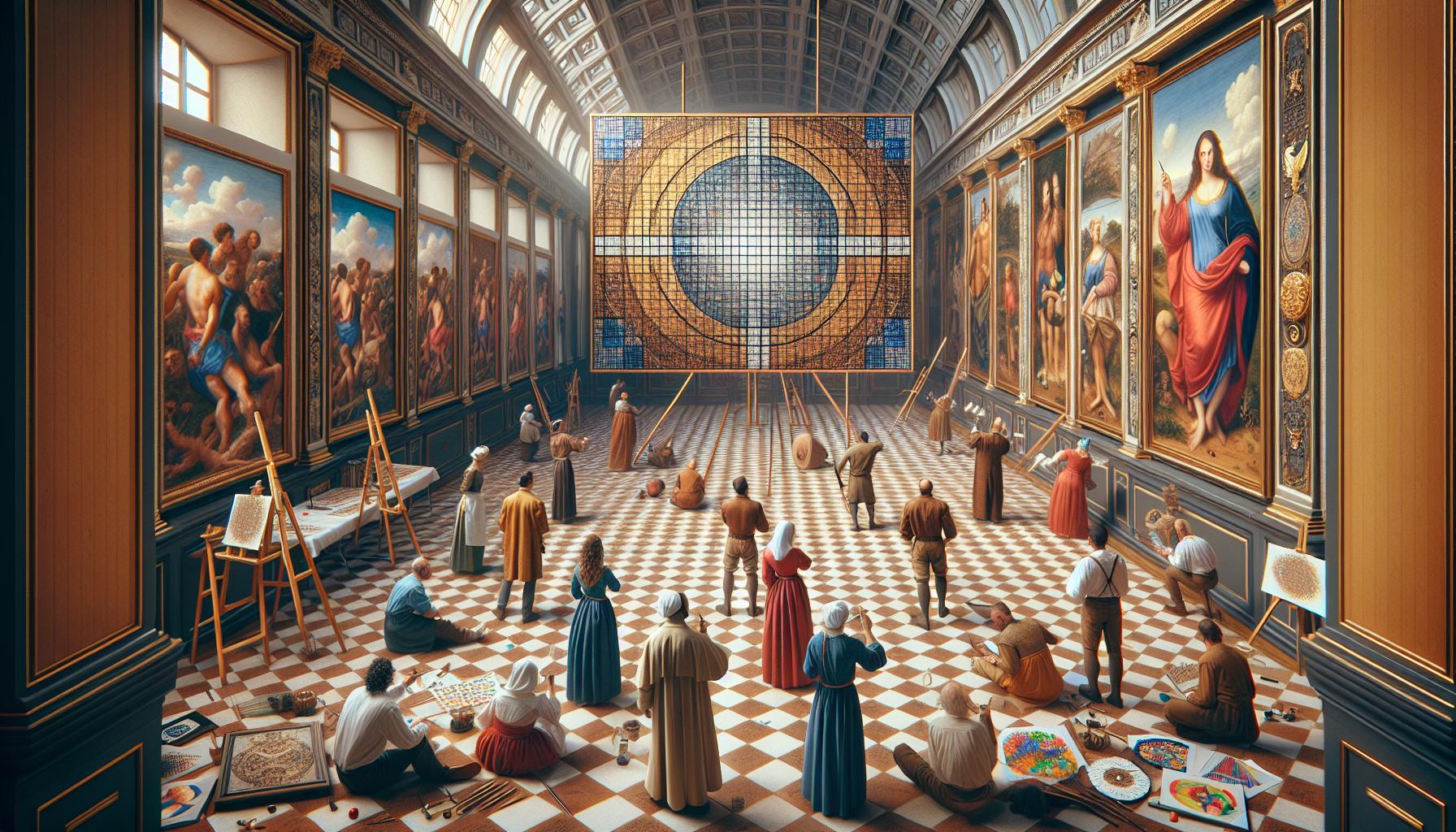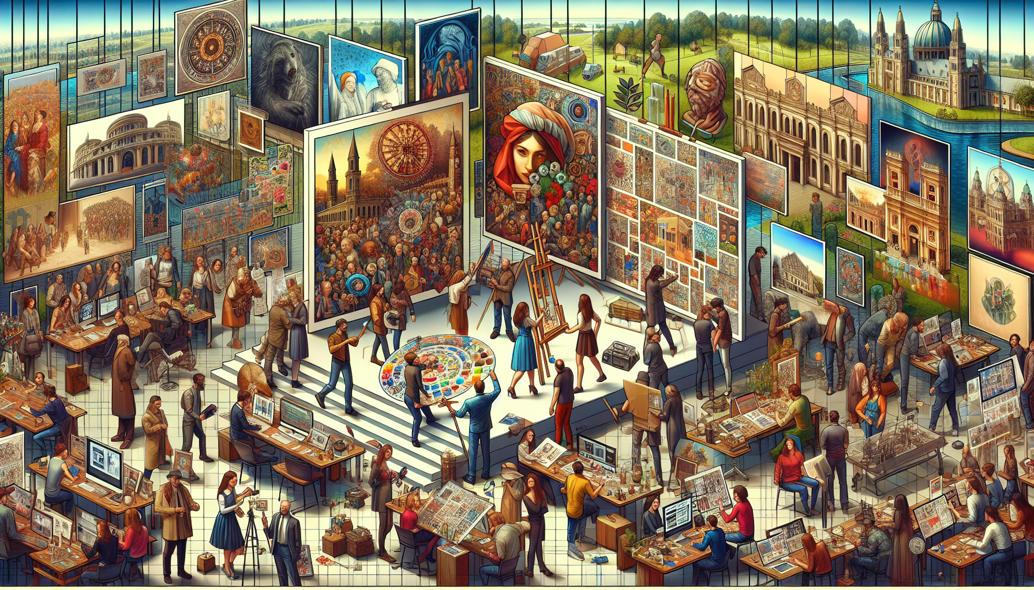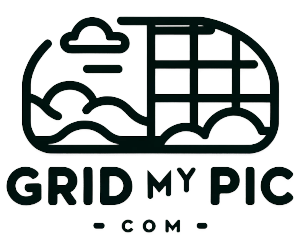Exploring the Use of Grids for Concept Art
Unlock the secrets of timeless art technique with grid drawing! Discover how grids can revolutionize your concept art by enhancing your grasp of proportions and perspectives. Elevate your creative process and refine your skills like the masters.

Exploring the Use of Grids for Concept Art
Concept art is an essential part of the creative process in numerous visual fields, from video games and animation to film and digital illustration. At the heart of mastering concept art lies one fundamental skill: accurately capturing proportions and perspectives. One incredibly effective method for developing this skill is the age-old technique of grid drawing. This blog post delves into how grids can revolutionize your sketching process, elevate your creative insights, and refine your art techniques.
The Power of Grid Drawing in Concept Art
Grid drawing, or the use of a grid framework to layout a sketch, is a technique that has been used by artists for centuries. The Renaissance masters, such as Leonardo da Vinci and Albrecht Dürer, often employed grids to ensure the proportion and perspective of their compositions were impeccable. Today, grid drawing remains an invaluable tool for concept artists who strive to blend creativity with precision.
Improving Proportions with Grid Drawing
Maintaining accurate proportions is often one of the greatest challenges in concept art. Whether sketching a character, an environment, or a technological artifact, getting proportions right is critical to the credibility and impact of your work. Grids allow you to break down any subject into smaller, more manageable sections, making it easier to replicate complex forms accurately.
Enhancing Creativity with Structural Frameworks
While grids are often viewed as technical tools, they can also foster immense creativity. By breaking down a subject into smaller sections, you can focus on each piece's individual creativity. This means you can experiment with unconventional shapes, perspectives, and compositions more freely within each segment.

Using a grid can also help you navigate the complexities of dynamic poses and intricate scenes. When creating concept art for an action scene, for instance, a grid can help you determine the precise angles and perspectives needed to make each character's movement and interaction appear natural and dynamic.
Integrating Technology and Traditional Art Techniques
With advancements in digital art tools, the concept of grid drawing has evolved but remains rooted in traditional techniques. Most digital art software, like Adobe Photoshop, Procreate, and Corel Painter, offer easy-to-use grid overlays. These tools help artists seamlessly integrate grid techniques into their digital workflows.
Step-by-Step Guide to Using Grids in Concept Art
Let's take a more detailed look at how you can apply grid drawing to your concept art projects.
- Choose Your Reference and Grid Size: Start by selecting a reference image and determining the appropriate grid size. A smaller grid can help with intricate details, while a larger grid is useful for broad compositions.
- Overlay the Grid on Your Reference: Overlay your chosen grid on the reference image. Make sure the lines are visible enough to guide your sketching, but not so prominent that they obscure important details.
- Sketch the Grid on Your Canvas: Whether you're working traditionally or digitally, replicate the grid on your sketching surface with the same dimensions. This is crucial for maintaining proportional accuracy.
- Mark Key Points: Focus on significant landmarks in your reference image. Mark these within the corresponding grid squares on your canvas. Key landmarks might include the corners of the eyes, the tips of the nose, the edges of structures, or the horizon line.
- Begin Sketching Square by Square: Start sketching your subject square by square. This approach allows you to concentrate on small sections of the image, making it easier to replicate details accurately.
- Refine the Details: Once the basic sketch is complete, refine the details. You might choose to erase the grid lines at this stage or leave them lightly sketched as a guide.
- Finalize Your Artwork: Develop your sketch into a fully realized piece of concept art. Add shading, color, and additional details to bring your concept to life.
Mastering Proportions and Perspectives
Grid drawing is particularly beneficial for mastering the complex perspectives required in concept art. By allowing you to divide a composition into smaller parts, grids simplify the challenge of translating three-dimensional scenes onto a two-dimensional canvas. This is especially useful when working on environments or scenes with multiple characters, vehicles, or objects.
Grid drawing can be adapted to various perspectives, including one-point, two-point, and three-point perspectives. By aligning your grid lines with perspective lines, you can accurately capture the depth and spatial relationships in your scene. This technique is invaluable for creating believable and immersive worlds in your concept art.
Exploring Different Grid Styles
In addition to the classic square grid, concept artists can experiment with alternative grid styles to suit different artistic needs. Circular grids, for example, can be especially useful for drawing radial compositions or focusing on a central point. Triangular grids can help with angular designs, adding a geometric flair to your artwork.
Artists can also use the "golden ratio" grid, based on the Fibonacci sequence, to achieve aesthetically pleasing compositions. This grid divides the canvas into sections that adhere to the principle of the golden ratio, which can create harmonious and balanced designs.
Conclusion: Transforming Your Concept Art with Grids
Grid drawing is a timeless technique that can significantly enhance your concept art skills, from improving proportions and mastering perspectives to unleashing your creative potential. By integrating this method into your artistic workflow, you'll be able to tackle complex projects with greater precision and confidence. So grab your sketchpad or digital tablet, lay down those grids, and watch your concept art transform through structured creativity and refined technique.
Further Reading and Resources
- Books on Grid Drawing and Concept Art:
- "Drawing on the Right Side of the Brain" by Betty Edwards
- "Framed Ink: Drawing and Composition for Visual Storytellers" by Marcos Mateu-Mestre
- "Creative Illustration" by Andrew Loomis
- Online Courses:
- "Concept Art for Games" by CGMA
- "Character Design for Video Games" by Udemy
- "Perspectives in Landscape Drawing" by Domestika
These resources will offer additional insights into the power of grids and how they can be applied to elevate your concept art to new heights.
